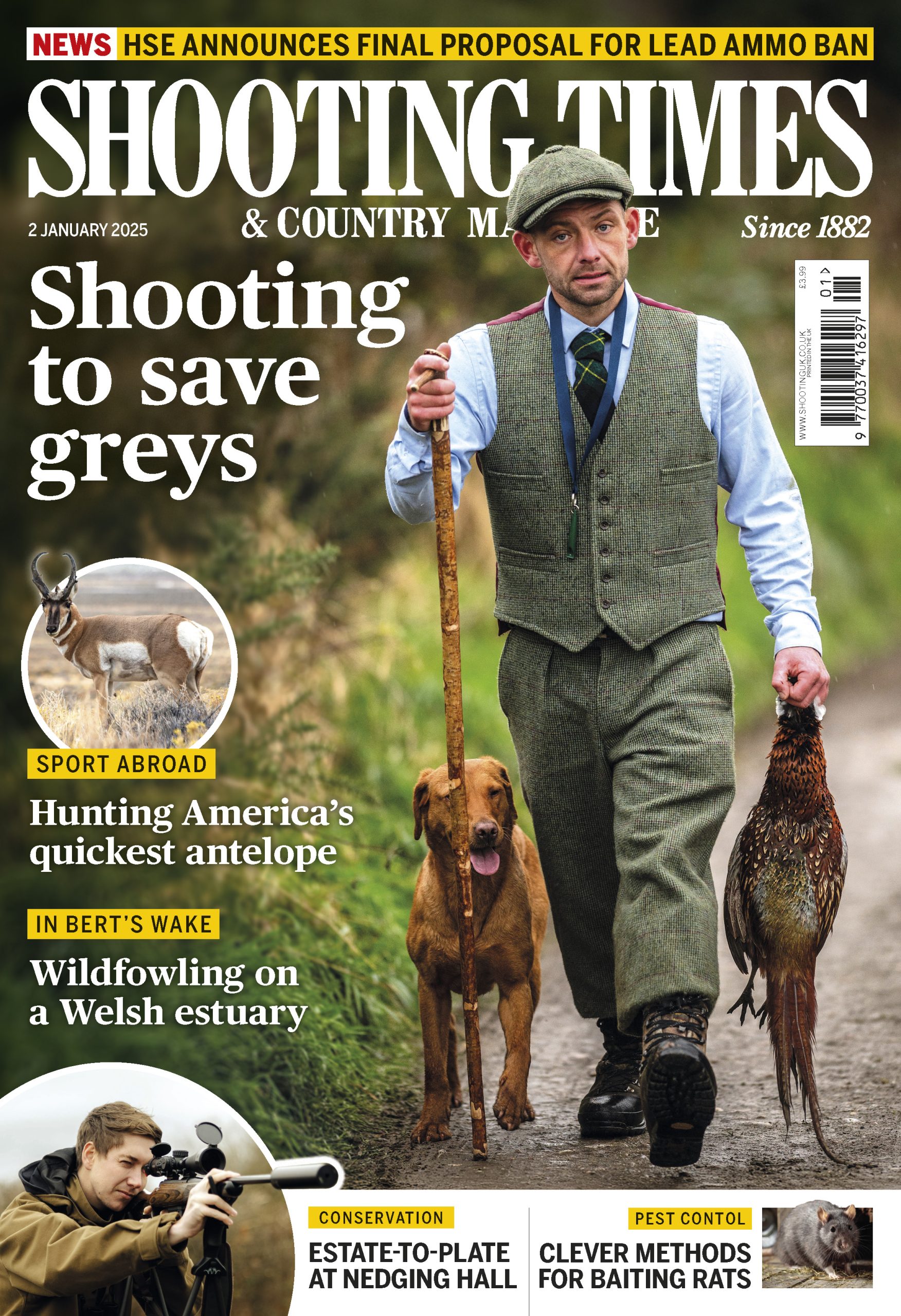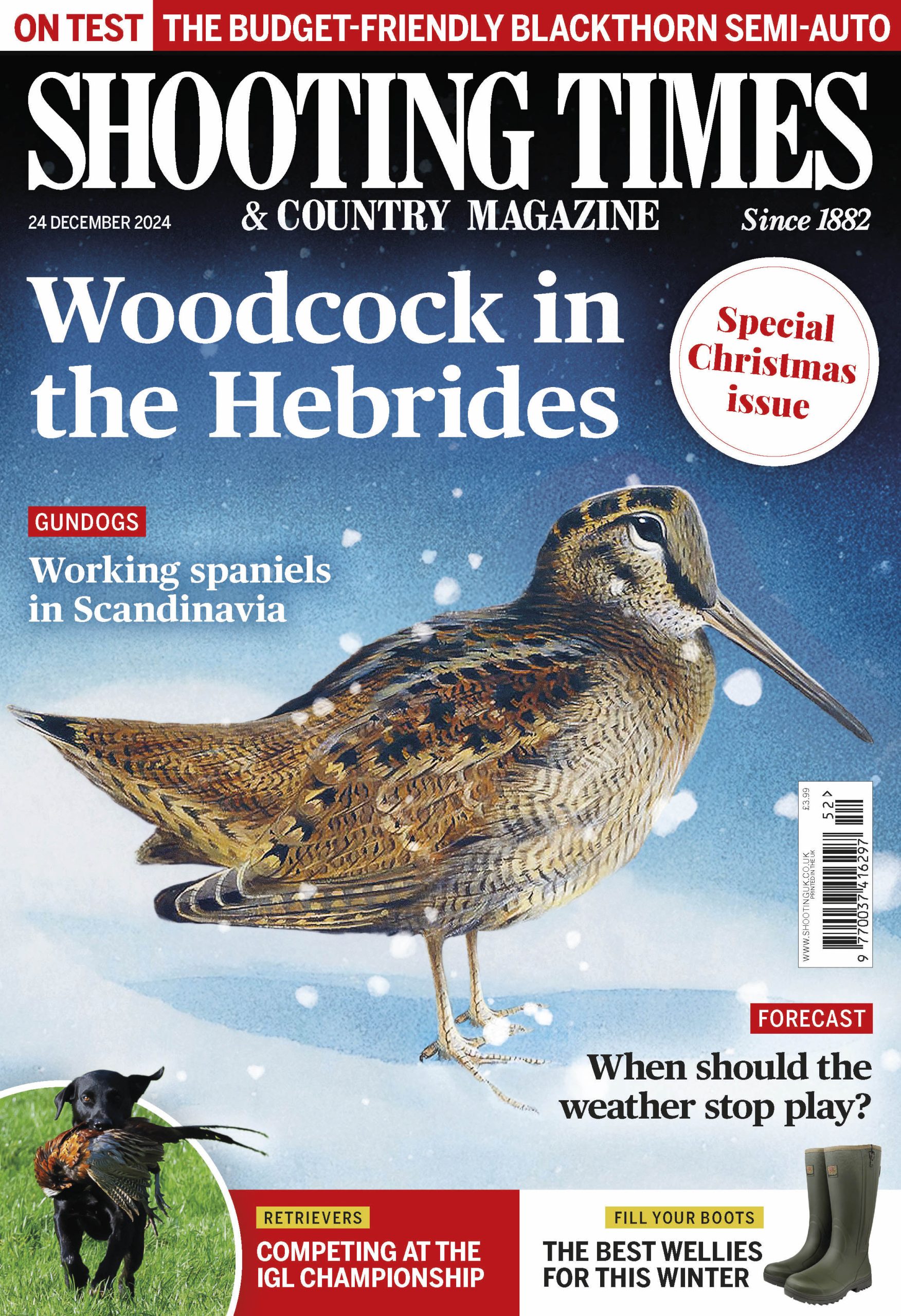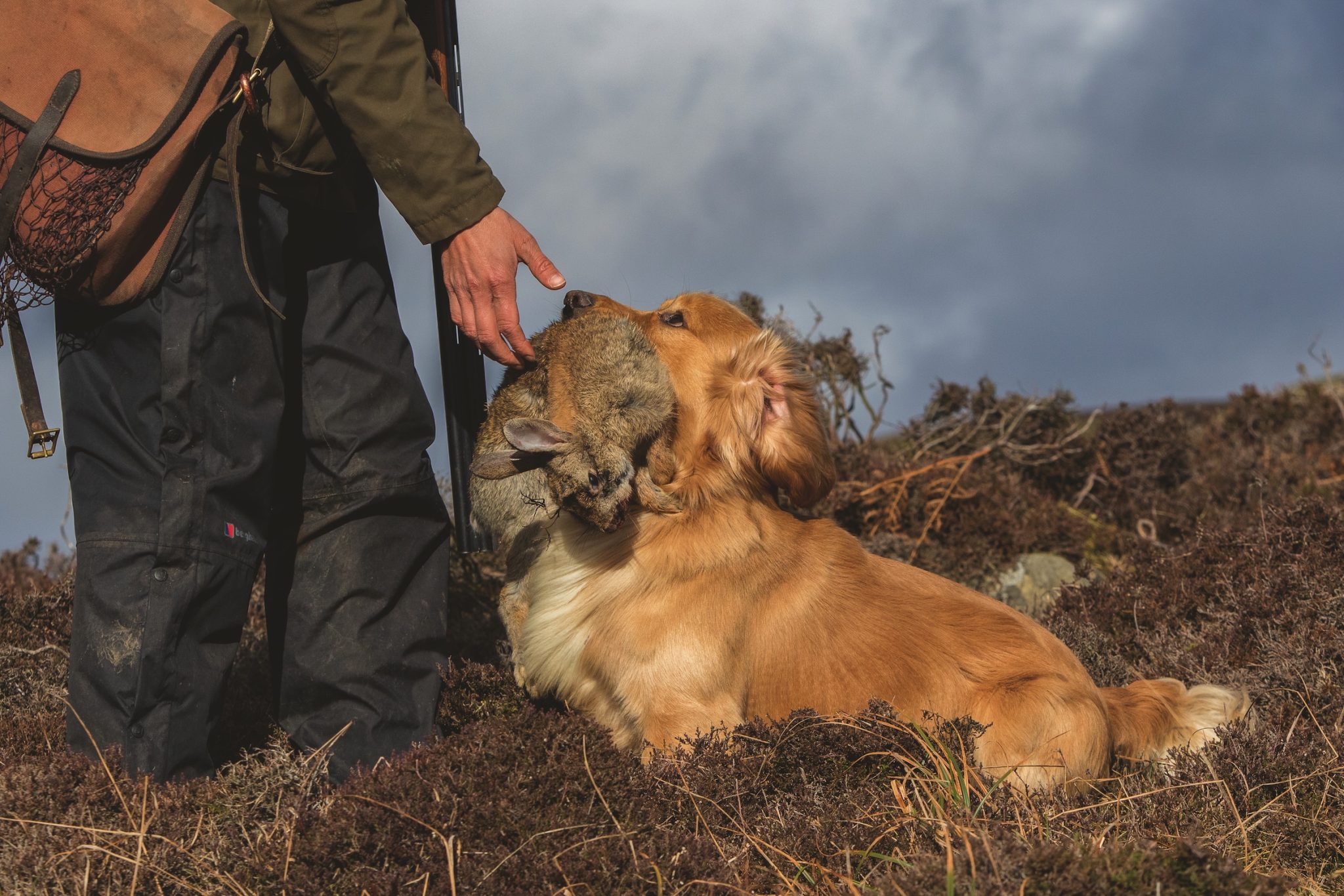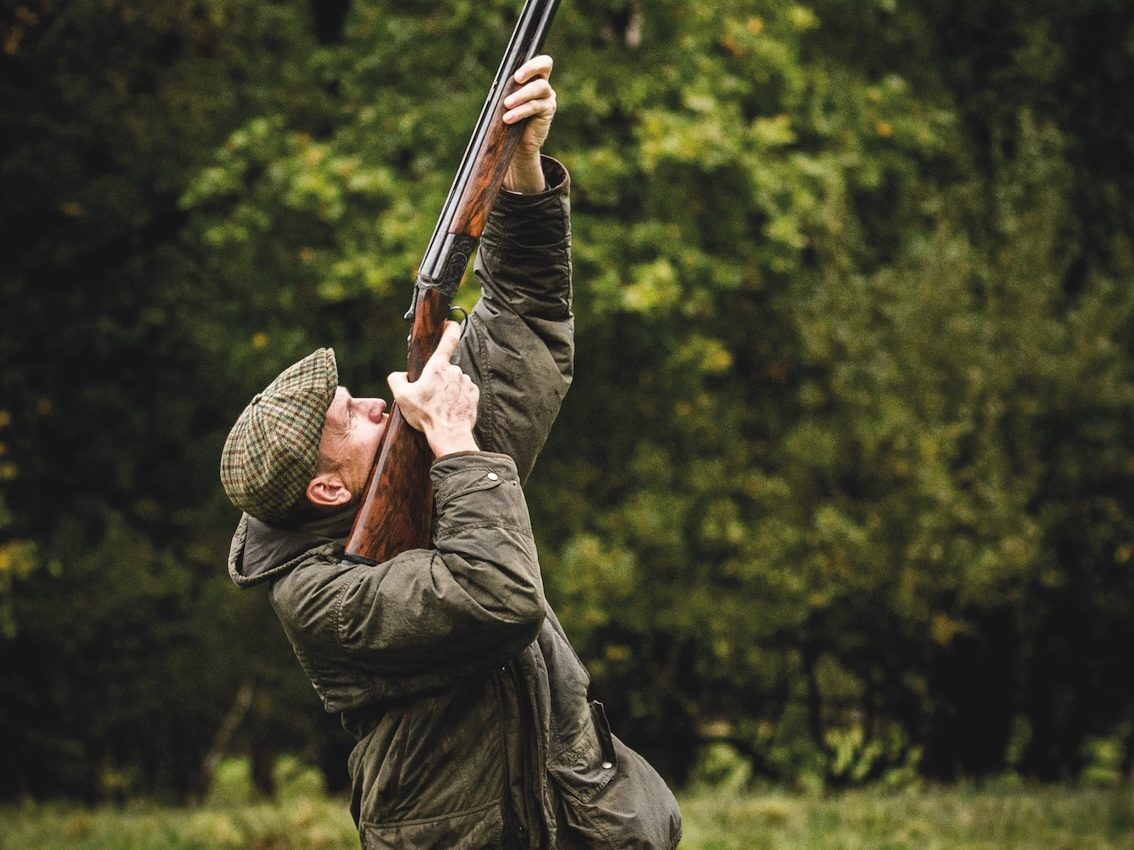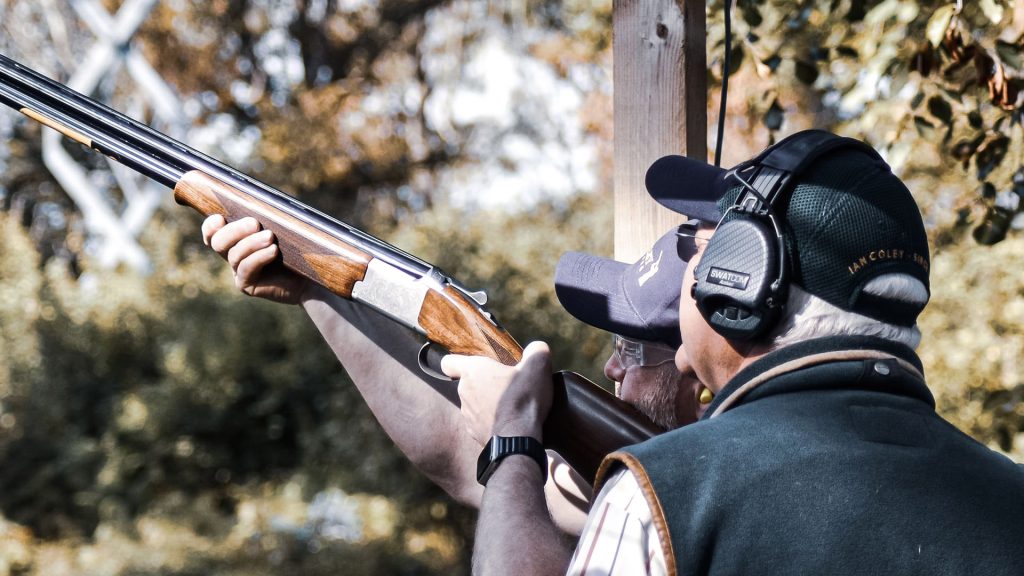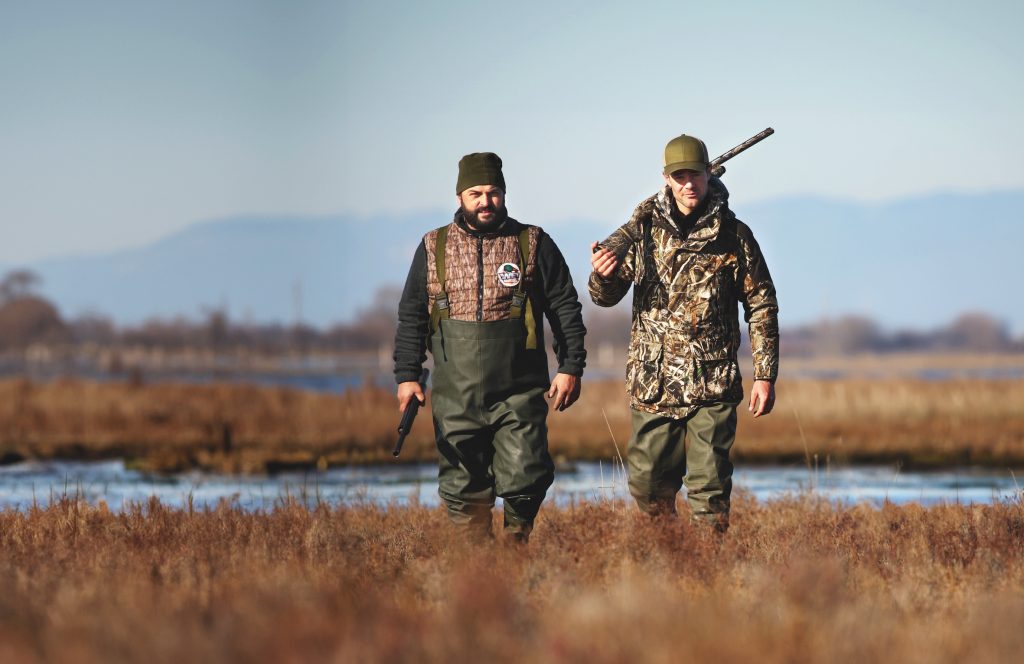Win CENS ProFlex DX5 earplugs worth £1,149 – enter here
Woodpigeon shooting kit reviewed
Tom Payne reviews modern woodpigeon shooting kit, from hide poles to flappers and decoys.
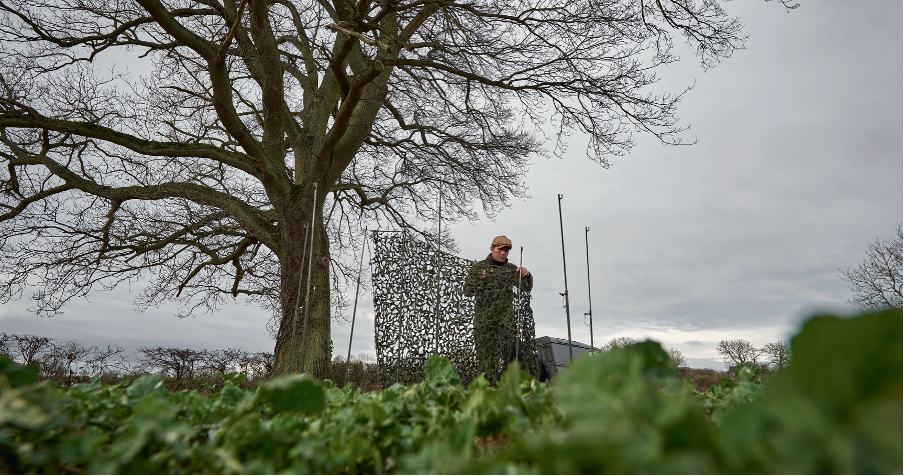
A brief history of pigeon decoying
Managing woodpigeon numbers to prevent crop damage is nothing new. As early as the 18th century, Gilbert White wrote about the need for control due to the destruction of staple crops such as turnips and barley.
Back then, muzzle-loaders meant birds were taken at roost or lured with hand-carved decoys made from ash and beech. By the 19th century, Lord Walsingham was writing on roosting and decoying techniques in The Badminton Library.
The evolution of the hide
In the post-war years, pigeon shooters like Archie Coats relied on homemade gear – oil drums as seats, bamboo for neck props, and branches to support birds.
After WWII, camo nets used for covering tanks became the go-to. These hessian nets, while heavy when wet, were incredibly effective. Today, specialist hides are lightweight, modular, and far more discreet. You’ll find none of us crouching in a hedge anymore.
Decoying: then vs now
Plastic decoys came in various styles, and early flappers required a long pull cord or fishing line to mimic flight. Crude, but effective. In the 1990s, the first electric rotary magnets and flappers appeared – creating an entire industry of pigeon shooting accessories. I’ve recently tested a variety of kit to separate the hype from the genuinely effective.
Field-tested gear: what works and what doesn’t
Nitehawk Rotary Magnet
Ideal for casual shooters or those heading out occasionally. It’s easy to use, but may struggle in hard Hampshire flint or Cotswold brash.
Available from www.nitehawkproducts.co.uk
Nitehawk Flapper
Classic design with excellent remote functionality. Let it tick over continuously in the background — it draws birds in naturally.
Great for beginners and affordable.
Top-quality alternatives
Flightline decoys
The flappers from www.flightlinedecoys.co.uk are second to none in terms of build and durability. Nick Tait’s Sniper Hide Poles are the best on the market. Avoid cheap telescopic poles – they simply don’t last.
Choosing the right magnet and decoy arms
Go for original four-arm magnets with fixed long/short arms. Avoid extendable arms or wing spreaders, they don’t present the bird correctly.
Decoying with the real thing
Dead pigeons still make the best decoys. But if you must use plastic:
Enforcer decoys
Slightly darker in tone, but the quality is market-leading. They performed well even with green pigeons.
See them here:
https://www.shootinguk.co.uk/reviews/decoys
A1 Decoys Cradle
My long-time favourite. Versatile, easy to set up, and works on all crop types.
Browse at www.a1decoy.co.uk
Nitehawk’s flock-coated and old-school Flexicoys also work well – but again, nothing beats the real bird.
Sit tight: the right seat for pigeon shooting
Comfort and function are critical. I recommend Idleback Shooting Chairs – well-built, height-adjustable, and sturdy.
Avoid:
-
Low stools
-
Bucket seats
-
Anything that prevents a smooth, slow rise to shoot
Your knees should always be below your hips when seated.
Camo nets: what to look for
Surplus army nets remain the best. Mix your colours – greens and desert shades, to match terrain.
Avoid:
-
Stealth nets unless using as a backing net
-
Any netting that shimmers
New options like gillie suit netting, made by Andy Crow, show real promise.
Final essentials: binoculars and fieldcraft
Don’t go pigeon shooting without binoculars. Prices vary, but a good set is vital for proper reconnaissance. But remember — no kit replaces good fieldcraft. Understanding birds and placing your hide correctly still matter most.
Final thoughts
All the kit in the world cannot replace fieldcraft, understanding the birds and shooting straight.
Spend wisely, test thoroughly, and build your knowledge in the field. And never forget: dead birds make the best decoys.
Don’t miss our recipe for woodpigeon in black bean sauce – a bold and flavourful twist on a takeaway classic.
Related Articles
Get the latest news delivered direct to your door
Subscribe to Shooting Times & Country
Discover the ultimate companion for field sports enthusiasts with Shooting Times & Country Magazine, the UK’s leading weekly publication that has been at the forefront of shooting culture since 1882. Subscribers gain access to expert tips, comprehensive gear reviews, seasonal advice and a vibrant community of like-minded shooters.
Save on shop price when you subscribe with weekly issues featuring in-depth articles on gundog training, exclusive member offers and access to the digital back issue library. A Shooting Times & Country subscription is more than a magazine, don’t just read about the countryside; immerse yourself in its most authoritative and engaging publication.
